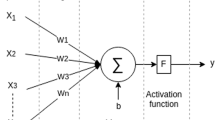Abstract
This paper presents an analytic hierarchy process based approach for approximation of stable high-order systems using teacher–learner-based-optimization (TLBO) algorithm. In this method, the stable approximant is derived by minimizing the errors of time moments and of Markov parameters of system and its approximant. Being free from algorithm-specific parameters, the TLBO algorithm is used for minimizing the objective function. The Hurwitz criterion is used to ensure the stability of approximant. The first time moment of the system is retained in approximant to guarantee the matching of steady states of system and approximant. The distinctive feature of this work is that the multi-objective problem of minimization of errors of time moments and of Markov parameters is converted into single objective problem by assigning some weights to different objectives using analytic hierarchy process. Also, the proposed method always produces stable approximant for stable high-order system. The results of proposed approach are compared with other existing techniques. To conclude the superiority of proposed approach, a comparative study is performed using the step responses and time domain analysis. The efficacy and systematic nature of proposed approach is shown with the help of two test systems.


Similar content being viewed by others
References
Fortuna L et al (2012) Model order reduction techniques with applications in electrical engineering. Springer, Berlin
Quarteroni A, Rozza G (2014) Reduced order methods for modeling and computational reduction, vol 9. Springer, Berlin
Schilders WH et al (2008) Model order reduction: theory, research aspects and applications, vol 13. Springer, Berlin
Singh J et al (2016) Biased reduction method by combining improved modified pole clustering and improved Pade approximations. Appl Math Model 40:1418–1426
Ionescu TC et al (2014) Families of moment matching based, low order approximations for linear systems. Syst Control Lett 64:47–56
Beattie C et al (2017) Model reduction for systems with inhomogeneous initial conditions. Syst Control Lett 99:99–106
Tiwari SK, Kaur G (2017) Model reduction by new clustering method and frequency response matching. J Control Autom Electr Syst 28:78–85
Ganji V et al (2017) A novel model order reduction technique for linear continuous-time systems using PSO-DV algorithm. J Control Autom Electr Syst 28:68–77
Bandyopadhyay B et al (1994) Routh-Padé approximation for interval systems. IEEE Trans Autom Control 39:2454–2456
Singh V, Chandra D (2012) Model reduction of discrete interval system using clustering of poles. Int J Model Ident Control 17:116–123
Singh V et al (2017) On time moments and Markov parameters of continuous interval systems. J Circuits Syst Comput 26:1750038
Singh VP, Chandra D (2011) Model reduction of discrete interval system using dominant poles retention and direct series expansion method. In: 2011 5th International power engineering and optimization conference (PEOCO), pp 27–30
Singh V et al (2004) Improved Routh-Padé approximants: a computer-aided approach. IEEE Trans Autom Control 49:292–296
Singh V (2005) Obtaining Routh-Padé approximants using the Luus–Jaakola algorithm. IEE Proc Control Theory Appl 152:129–132
Singh VP, Chandra D (2012) Reduction of discrete interval systems based on pole clustering and improved Padé approximation: a computer-aided approach. Adv Model Optim 14:45–56
Soloklo HN, Farsangi MM (2013) Multi-objective weighted sum approach model reduction by Routh-Pade approximation using harmony search. Turk J Electr Eng Comput Sci 21:2283–2293
Chen T et al (1980) Stable reduced-order Pad? approximants using stability-equation method. Electron Lett 9:345–346
Wan B-W (1981) Linear model reduction using Mihailov criterion and Pade approximation technique. Int J Control 33:1073–1089
Appiah R (1979) Padé methods of Hurwitz polynomial approximation with application to linear system reduction. Int J Control 29:39–48
Rao A et al (1978) Routh-approximant time-domain reduced-order models for single-input single-output systems. Electr Eng Proc Inst 125:1059–1063
Shamash Y (1975) Model reduction using the Routh stability criterion and the Padé approximation technique. Int J Control 21:475–484
Shamash Y (1980) Stable biased reduced order models using the Routh method of reduction. Int J Syst Sci 11:641–654
Saaty TL (1988) What is the analytic hierarchy process? In: Mathematical models for decision support, Ed Springer, pp 109–121
Saaty TL (2004) Decision making—the analytic hierarchy and network processes (AHP/ANP). J Syst Sci Syst Eng 13:1–35
Wasielewska K et al (2014) Applying Saaty’s multicriterial decision making approach in grid resource management. Inf Technol Control 43:73–87
Rao RV et al (2011) Teaching–learning-based optimization: a novel method for constrained mechanical design optimization problems. Comput Aided Des 43:303–315
Rao R et al (2012) Teaching–learning-based optimization: an optimization method for continuous non-linear large scale problems. Inf Sci 183:1–15
Gantmacher FR (1959) Matrix theory, vol 21. Chelsea, New York
Hsu C-C, Yu C-Y (2004) Design of optimal controller for interval plant from signal energy point of view via evolutionary approaches. IEEE Trans Syst Man Cybern Part B (Cybern) 34:1609–1617
Saaty TL (2000) Fundamentals of decision making and priority theory with the analytic hierarchy process, vol 6. Rws Publications, Pittsburgh
Singh SP, Prakash Tapan, Singh VP, Ganesh Babu M (2017) Analytic hierarchy process based automatic generation control of multi-area interconnected power system using Jaya algorithm. Eng Appl Artif Intell 60:35–44
Salim R, Bettayeb M (2011) H 2 and H\(\infty \) optimal model reduction using genetic algorithms. J Franklin Inst 348:1177–1191
Author information
Authors and Affiliations
Corresponding author
Rights and permissions
About this article
Cite this article
Singh, S.P., Singh, V. & Singh, V.P. Analytic hierarchy process based approximation of high-order continuous systems using TLBO algorithm. Int. J. Dynam. Control 7, 53–60 (2019). https://doi.org/10.1007/s40435-018-0436-9
Received:
Revised:
Accepted:
Published:
Issue Date:
DOI: https://doi.org/10.1007/s40435-018-0436-9




